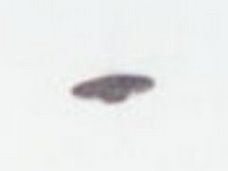Tuesday, March 14, 2017
Monday, July 4, 2016
Monday, September 28, 2015
Interview in Spectral Hues.....September, 2015
http://www.spectralhues.com/books/2015/09/vis-vis-author-joygopal-podder/
Sunday, September 27, 2015
Friday, September 25, 2015
Eight book reviews of my new novel "Chief Minister's Mistress".....
# Rarely does one comes across this kind of combination for book lovers. An author who holds the Limca Book of Records for writing at the fastest pace and a publisher who delivers the best. We expect a crime thriller to have a mind blowing speed and this particular book doesn’t disappoint you on this quarter. Ratings....Cover : 4/5; Story : 3.5/5; Characterization : 4/5; Writing Style & Narration : 4/5; Presentation : 4/5; Overall : 4/5. – Sandeep Sharma, “The Author’s Blog”
# "Interesting and gripping novel....all the very best". – Nilima Pathak, Correspondent, 'Gulf News' Dubai
# “Chief Minister’s Mistress is a masterpiece murder mystery… I thoroughly enjoyed the political thriller.” – Gunjesh Bond, Author
# Amazon.in Customer Review: 4 out of 5 stars
# The author uses straight forward narrative…He uses very simple language throughout the book…The story is interesting. – Vijayta Lalwani, Betweenthelines.in
# Goodreads.com Customer Review: 4 out of 5 stars
Sunday, August 30, 2015
Thursday, August 13, 2015
Tuesday, August 11, 2015
Tuesday, April 8, 2014
My biography on Wikipedia : http://en.wikipedia.org/wiki/Joygopal_Podder
Thursday, July 25, 2013
Tuesday, June 25, 2013
Friday, March 1, 2013
Monday, February 18, 2013
Friday, January 4, 2013
Wednesday, October 10, 2012
Thursday, August 9, 2012
Wednesday, August 1, 2012
Saturday, March 10, 2012
Thursday, December 15, 2011
Sunday, November 6, 2011
Sunday, July 17, 2011
Thursday, June 23, 2011
Monday, May 23, 2011
Monday, May 16, 2011
Wednesday, March 30, 2011
UFO over Lafayette, Colorado, caught on camera
Leroy van der Vegt and his son Nick captured the sight on camera on March, 20th 2011, and the unidentified red lights did not blink but were in a triangular shape as they hovered in the sky.
"It was completely quiet. No noise at all," ABC News quoted van der Vegt as saying. He doesn't know what it was but he is sure that what he saw was not a satellite, helicopter or airplane.
He said the triangle eventually headed northeast and the lights faded. Lester Valdez and all of his neighbours saw the unidentified lights.
"I have never witnessed anything like that," Valdez said. He said they looked like tiny, bright alien ships from 'Close Encounters of the Third Kind'.
"It was exactly something like that where you see an object and they all got into a pattern and they stood in a pattern, and they all moved in a direction and then they pretty much dropped and that was it," Valdez said.
Saturday, January 29, 2011
Sunday, January 16, 2011
Sunday, December 19, 2010
An Excerpt From My Book: "A Matter Of Survival"
I am an Olive Ridely Sea Turtle. I get my name from the olive (or green/grey) colour of my heart-shaped shell. I am also called the Pacific Ridely.
I am one of the smallest of sea turtles inhabiting the world’s oceans. I am only about two feet long and weigh just over thirty-five kilograms. The males of my species never weigh more than thirty three kilograms. I have come to the coastal waters bordering this beach called Gahirmatha, located on the eastern coast of the country called India, to nest.
Along with hundreds to thousands of my sisters, I nest two times a year on this beach and deposit between 100 and 110 eggs per nest. Hatchlings emerge from the eggs after fifty or sixty days of incubation in the nest.
After the eggs hatch, the little turtles, my children, along with many thousands of other hatchlings, will travel across the beach to the water – their new home.
Many will not make the short distance from the nest to the sea. They will fall prey to predators like vultures from the sky or jackals and snakes on the ground. But those who cross this most important challenge so early in their lives will, like me, go on to inhabit the waters of the open ocean and the wonderful world just beneath the surface of the undulating waves.
I have travelled many thousands of miles, thru’ choppy seas and dangerous waters, to get here. I do not have many enemies in the ocean – but sharks and killer whales do attack if they are hungry and a sea turtle is the only meal ticket in sight. My sisters and I migrate like this all together, in very large numbers, about twice a year. Once nesting is over, we go back from the beaches and shallow waters to the open ocean – our home.
I live in the middle of the ocean, inhabiting the upper, sunlit regions, where most ocean organisms live. Food is abundant there – lower down, in the unlit zones, water pressure is high, temperatures are cold, and food sources scarce.
I am not vey particular about what I eat: my diet includes crabs, shrimp, rock lobsters, jellyfish and tunicates. If nothing else is available, then even algae works for me. All this is abundantly available in the open ocean, in the upper, sunlit regions, where I live most of the year, except during the nesting season. Then I need to forage in coastal waters and estuaries.
The most remarkable characteristic of my species is our nesting strategy. Hundreds to thousands of us females converge in coastal waters then come ashore simultaneously in a spectacular mass-nesting event known as an “arribada” (this is a Spanish word meaning “arrival by sea”). Human scientists also term this behavior of ours as “synchronized nesting in mass numbers”.
During our massive nesting aggregations, known as arribadas or arribazones, many thousands of us female Olive Ridely Sea Turtles nest in large simultaneous waves over small stretches of beach.
We generally begin to aggregate near nesting beaches approximately two months before nesting season.
How do I know that the time is right for the arribada? Human scientists have conducted research in order to find the answer to this question and have offered several theories.
One theory suggests that we female turtles release a hormonal scent or pheromone that queues the beginning of the event. There is also evidence that these mass-nesting events coincide with certain phases of the lunar cycle. I really do not know. There is this instinct, passed down thru’ the generations, over a period of a million years, that tells my sisters and me – all of us around the same moment (give or take a few days or weeks) – when the time has come to begin our migration to the coast. For humans, this continues to be one of nature’s great mysteries.
The majority of us Olive Ridelys who live in the Indian Ocean nest in two or three large aggregations near Gahirmatha which is located in the Bhitarkanika Widlife Sanctuary of the province of Orissa in the country called India. I am told that this is one of the largest Olive Ridely nesting populations in the world, with about 400,000 of us sisters nesting every year. However, our numbers have come down very much. Legend has it that, not more than twenty years ago, 600,000 turtles, the mothers of our mothers, nested along the coast of Orissa, from Paradip to Chilika, in one week.
Since then, our numbers have reduced. We are suffering high mortality for various reasons. Many hundreds of my sisters have met their deaths due to near shore gill nets and trawl fisheries.
Humans are our biggest enemies. They hunger for our eggs. When given an opportunity, they slaughter my nesting sisters on the beach. They try to catch us at sea, with these huge nets, for commercial sale of both our meat and hides.
We Olive Ridely turtles are widely distributed across the globe in tropical and sub-tropical oceans of the world – but our largest nesting aggregations occur in the beaches of Orissa in the Indian Ocean. Nesting occurs elsewhere along the Coromandel Coast and Sri Lanka, but in scattered locations.
In the Pacific Ocean, arribadas occur only within the tropical eastern Pacific, in Central America and Mexico. In Costa Rico, arribadas occur at Nancite and Ostional beaches. There are two active arribadas in Nicaragua; Chacocente and La Flor; and a small nesting ground in Pacific Panama. My sisters tell me that there were several arribadas in Mexico, yet only one remains at Playa Escobilla in Oaxaca.
The primary threat to my species comes from human predation in the nesting habitat. The arribada with its large congregation of nesting females makes it possible for humans to collect huge quantities of eggs and kill or collect (to sell in the market) hundreds or even thousands of us turtles in one night. This practice of mass harvesting and killing over the past sixty years has caused local populations of Olive Ridelys to plummet in many areas of the globe.
I believe that the total population of my species worldwide has fallen by an astounding fifty percent during the last fifty years.
I believe that humans have labeled my species as endangered.
Another form of human intrusion that threatens us sea turtles is the permanent destruction of the nesting habitat through coastal degradation and so-called ‘development’.
‘Development’ like the huge factory complex and port that are being built near our favourite beaches in Orissa.
‘Development’ like the dredging and excavation activity that will be carried out on vast tracts of seabed near our favourite beaches to enable this port to be built. The digging up of the seabed for creation of the port will also destroy parts of the beaches we love to nest in and will disturb what human scientists call “aquatic ecosystems” – and what I know as sources of food and of life itself.
Where will we go to nest now?
Friday, October 22, 2010
Friday, October 15, 2010
My second novel: "The Inheritance" has been published...

Saturday, September 4, 2010
http://www.pustakmahal.com/book/book/bid,,9553A/isbn:9788122311457/index.html
Thursday, August 19, 2010
Sunday, August 1, 2010
Loch Ness Monster 'caught on camera' off British coast
The photograph was taken as the 'animal' was stalking a shoal of fish, which were apparently so terrified they beached themselves just seconds later.
Locals, who spotted the creature off the Devon coast at Saltern Cove, Paignton, had thought that it was a turtle.
Other pictures taken by one of the baffled witnesses, Gill Pearce, however revealed that the neck of the greenish-brown beast with the reptile-like head was far too long to be a turtle.
Pearce, who took the photo on July 27, reported her sighting to the Marine Conservation Society (MCS) where sea life experts studied it.
"Gill Pearce spotted the creature about 20 metres from the bay at Saltern Cove, near Goodrington," the Daily Mail quoted Claire Fischer from the MCS as saying.
"It was observed at about 15.30 on 27 July but by the time she had got her camera it had moved further out.
"She spotted it following a shoal of fish which beached themselves in Saltern Cove.
"The creature remained in the sea, then went out again and followed the shoal - this indicates it's not a turtle as they only eat jellyfish.
"We would love to know if other people have seen anything like this in the same area and can help clear up the mystery," Fischer added.
Thursday, July 1, 2010
Cleopatra died of drug-spiked cocktail, not snakebite says a German scientist
Christoph Schaefer, a historian and professor at the University of Trier, has presented evidence on a TV show that aims to prove drugs and not the reptile were the cause of the Egyptian beauty's death.
"Queen Cleopatra was famous for her beauty and was unlikely to have subjected herself to a long and disfiguring death," The Scotsman quoted Schaefer as saying
He is also the author of a best-selling book in Germany titled 'Cleopatra'.
"It was this aspect, her beauty which she cherished so much, which made me journey with other experts to Alexandria, Egypt, where we consulted ancient medical texts and snake experts. Cleopatra wanted to remain beautiful in her death to maintain her myth," Schaefer said.
"We consulted zoologists and toxicologists; a snake bite would have been too uncertain and taken too long," he added.
The Adventure Science programme, titled 'Cleopatra's Death', displays ancient texts that record the potion as being a popular method of suicide - and assassination - at the time she lived.
Friday, April 2, 2010
The Man in the Iron Mask - A Historical Mystery
The story of the Man in the Iron Mask is a myth rooted in truth. There is much mystery regarding exactly who the masked prisoner was and what he looked like.
For centuries following his death, many people have made up various stories and theories about the prisoner’s existence and why he was imprisoned behind a mask. Evidence suggests he might have been the twin brother of Louis XIV, but this is uncertain.
The Prisoner in the Iron Mask
In the year of 1698 an important man was apparently imprisoned in the Bastille by Louis XIV. “The exact identity of the man was never revealed. In fact, great care was given to conceal his identity,” says historian Charlotte Kuchinsky. However, at that time, only those who had fallen out of favour with the king were imprisoned.
Another interesting aspect about this prisoner is that, not only was he confined in a prison cell, he was imprisoned behind a mask. Exactly what that mask was made of is not known. Some scholars, including Alexandre Dumas, assert that the mask was made of iron. According to some accounts, the iron mask had a movable hinged lower jaw held in place by springs that made it possible for the prisoner to eat while wearing it. The only known evidence is that it was made of black velvet.
Regardless of what it was made of, the man must have eaten and slept in the mask because he was found with it intact when he died.
Two of Louis XIV’s musketeers guarded the prisoner’s cell day and night and threatened to kill the man if he removed the mask. By doing this, they were able to keep his identity anonymous.
The mysterious man’s imprisonment, though, was not kept secret. News of his imprisonment spread throughout France and dozens of theories regarding his identity were created.
The Masked Man as Louis’s Twin Brother
The philosopher Voltaire, who was himself imprisoned in the Bastille, spoke to several prisoners who knew of the man in the iron mask. According to Voltaire, the masked man was a tall and handsome nobleman who was arrested and confined in the mask in 1661. For several years he was imprisoned on the Isle of Sainte-Marguerite.
According to Voltaire and other claims, when the man died in 1703, the mask was removed to reveal a person who looked identical to Louis XIV. These accounts fuelled the theory that Louis XIV had a twin brother and that he had to dispose of him so that he would be king. Other accounts assert that King Louis XIII, fearing his sons would war over the throne, sent the eldest son away to be raised in total secrecy. There is in fact some truth to this theory in that when the prisoner died, he was about the same age as the king.
Napoleon Bonaparte’s Theory
Napoleon Bonaparte, who claimed to be a descendent of King Louis XIV, came up with his own theory that became very popular. While imprisoned, the man was allowed to marry and his wife bore him a son. When the child was young, he was sent to be raised in Corsica. “The name of the family who took in this hapless child was Bonaparte,” says Kuchinsky. While the theory served Napoleon’s needs, there is no evidence that proves this account to be true.
There are several other theories about the life and identity of the mysterious prisoner in the mask. Some people have even suggested that he was a black lover of the Queen who the jealous King arrested and imprisoned behind the mask. Some suggested he was an illegitimate son of the Queen Mother. Yet, others went as far to suggest the masked man was the playwright Moliere.
None of these theories have been proven to be true. The history of the man in the iron mask remains a mystery that will probably never be solved.
Sunday, December 13, 2009
Extinction of dinosaurs
Why did dinosaurs vanish suddenly, after ruling the earth for some 120 million years, is a question that still puzzles scientists today.
Despite the many theories on dinosaur extinction, including the currently popular meteorite impact theory, the demise of the dinosaurs is still unexplained.
Wherever dinosaur bones are unearthed, the evidence predominantly suggests catastrophic entombment by water, sometimes by clearly marine water. Just the burial and fossilisation of such massive hulks as the large dinosaurs indicates catastrophic action. There is also evidence that some dinosaurs were rapidly buried in at least regional debris flows.
The large dinosaur bone-beds especially indicate a major catastrophe. Some of these bone-beds represent the remains of one dinosaur species, an unusual taphonomic condition. Babies and young juveniles are almost entirely missing as fossils, another enigmatic occurrence for those who assume uniformitarianism.
Billions of dinosaur tracks have recently been discovered, and these provide further evidence for unusual, stressful conditions. For instance, the tracks do not traverse hills, they are practically always orientated in a straight line, there are very few tracks of baby dinosaurs, and some dinosaurs that may have been poor swimmers are nearly absent. It is suggested that dinosaur tracks and remains could have occurred during temporary exposure of sediments during the first half of the Flood.
Dinosaur eggs, nests, and babies at first glance appear to contradict the hypothesis of briefly exposed sediments during the Flood. However, many unknowns still surround this fascinating evidence of in situ dinosaur activity.
The volcanic and meteorite theories for dinosaur extinction have both supportive and contrary data. The data from these theories can be fitted into a Flood model, a model in which the dinosaurs perished at different times within the first 150 days.
Saturday, October 17, 2009
Tuesday, September 8, 2009
Who was "Jack the Ripper"?
Jack the Ripper is the world’s most famous serial killer. Yet his reign of terror lasted a mere 10 weeks and was confined to a small area of the Victorian Metropolis. It is difficult today to say how many victims he actually had, though it is generally agreed that there were five. These five were Mary Nichols, Annie Chapman, Elizabeth Stride, Catherine Eddowes and Mary Kelly. The first victim, Mary Nichols, was murdered on August 31st 1888. The final victim, Mary Kelly, was murdered on 9th November 1888.
The killings took place in one of the most crime ridden parts of Victorian London, and all the victims were common street prostitutes. The question that has eluded dedicated researchers for over a hundred years now is who was Jack the Ripper? Obviously today it is virtually impossible to answer this question with 100% certainty. We can look at what the detectives of the time, those who investigated the killings, had to say. But in order to even attempt to answer the question we must first ask and answer another question. What happened to Jack the Ripper to stop him killing?
If we accept that Mary Kelly was the last victim of Jack the Ripper, then we must also accept that something happened to the killer shortly after the bloodbath in Miller’s Court (the place where Mary Kelly lived and where she was murdered in the early hours of 9th November 1888). Murderers such as this don’t stop killing. They may lie low for a while, perhaps even for many years. But the desire to kill remains and can be re-awakened at anytime, unless something happens to the murderer to stop him.
In the case of Jack the Ripper that something was doubtless one of four things. He may have died, possibly by his own hand, shortly after he killed Mary Kelly. He may have been living with his family and they either realised he was insane and incarcerated him in a lunatic asylum, or possibly even handed him over to the police. A third, though unlikely, explanation is that he moved somewhere else continued killing and the connection was never made. This is an unlikely explanation since the murders were reported all over the world, and had a similar killing spree occurred somewhere else there is little doubt that the connection would have been made. The fourth and most likely scenario, however, is that at some stage in the days or months that followed the murder of Mary Kelly the police finally got the break they’d been hoping for since the killings began, and Jack the Ripper was finally caught. So having considered the options as to what happened to the murderer we can now turn our attentions to the question everybody wants to know. Who was he?
Throughout the autumn of 1888 the Victorian police were arresting suspect after suspect but each time they arrested a likely looking candidate they were either able to provide cast iron alibis for their whereabouts on the nights of the murders, or else were exonerated by actual events when the killer struck again whilst they were in police custody.
On 19th September the Chief of London police (Metropolitan Police Commissioner) Sir Charles Warren wrote to the Home Office to update them on progress, or to be more precise lack progress, in the police investigation. “A great number of clues have been examined & exhausted without finding anything suspicious. A large staff of men are employed and every point is being examined which seems to offer any prospect of a discovery.” He also mentioned three men against whom the police had suspicions.
The first was Jacob Isenschmid, an insane pork butcher from Switzerland who had been arrested at Holloway and was now in an asylum. Abberline had written of this suspect on 18th September “Although at present we are unable to procure any evidence any evidence to connect him with the murders, he appears to be the most likely person that has come under our notice to have committed the crimes.” Apparently two doctors Dr Cowan and Dr Landseer had alerted the police to the fact that this man, whom they knew to be a lunatic, was the murderer. His landlord told the police that he was absent from his lodgings during the night when Annie Chapman was murdered. His estranged wife, Mary, told Sergeant Thicke that although her husband was violent she did not thing he would “…injure anyone but me. I think he would kill me if he had the chance.” But, as with Ludwig, Isenschmid was also not the murderer, for on the 30th September, when the killer struck again, the mad Swiss Pork Butcher was caged in an asylum.
Warren’s second suspect was Oswald Puckeridge who had been “released from an asylum on 4th August [and who] has threatened to rip people up. He is being looked for but cannot be found as yet.” Not a great deal has been found about Puckeridge, and even less is known about why the police suspected him. It would seem that the police may have traced him and eliminated him as a suspect, since his name was not included on later lists of suspects.
The final suspect is even more elusive since Warren doesn’t identify him but merely states that “A brothel keeper who will not give her address or name writs to say that a man living in her house was seen with blood on him on morning of murder. She described his appearance & said where he might be seen. When the detectives came near him he bolted, got away & there is no clue to the writer of the letter.”
Evidently the police were no nearer catching the killer by the end of September 1888 than they had been at the start of Jack the Ripper’s killing spree. But the suspects being brought in and questioned at least give us an insight into the type of person the police thought they were dealing with and so provide us with something of an insight into the police thinking at the height of the Jack the Ripper scare.
However, it is now time to look beyond the autumn of terror and look at the suspects that the police had after the final Jack the Ripper murder, that of Mary Kelly on the 9th November 1888.
On 13th February 1894 The Sun Newspaper began a series of articles that did not reveal the name of their suspect but were obviously referring to one Thomas Hayne Cutbush. Thomas is said to have contracted syphilis in 1888 after which he began suffering paranoid delusions. On March 5th 1891 he was detained at Lambeth Infirmary as a wandering lunatic, but he escaped within hours. Over the next few days he stabbed a lady named Florence Grace Johnson, using a knife he had purchased in Houndsditch the week before. He then attempted to stab another lady, Isabelle Frazer Anderson before being arrested on 9th March 1891. He was arraigned at the London County Sessions in April 1891, found to be insane and was sentenced to be detained during Her Majesty's Pleasure. He was sent to Broadmoor Criminal Lunatic Asylum where he remained until his death in 1903.
Cutbush was the nephew of Superintendent Charles Henry Cutbush, who was responsible for supplies and pay at Scotland Yard. Doubtless he was one of the “relatives” referred to in the articles as being “in positions which would make them a target for the natural curiosity...” In 1896 Superintendent Cutbush shot himself in the head in his own kitchen in the presence of his daughter.
The Police, it appears, had already considered and looked into the possibility of Cutbush’s being Jack the Ripper and had ruled him out as a suspect. But, as a result of The Sun’s accusations, Melville Macnaghten was asked to prepare a report in which he refuted the newspapers allegations. Now known as the Macnaghten Memoranda this report was one of the first official documents to provide an insight into who the police at the time thought the killer was. Macnagheten mentions three suspects who were more likely to have been the murderer than Cutbush. It is important to note that Macnaghten does not say any of the three were Jack the Ripper, just that they were more plausible suspects than Cutbush. Referring to the killings Macnaghten wrote:
It will be noted that the fury of the mutilations increased in each case, and, seemingly, the appetite only became sharpened by indulgence. It seems, then, highly improbable that the murderer would have suddenly stopped in November '88, and been content to recommence operations by merely prodding a girl behind some 2 years and 4 months afterwards. A much more rational theory is that the murderer's brain gave way altogether after his awful glut in Miller's Court, and that he immediately committed suicide, or, as a possible alternative, was found to be so hopelessly mad by his relations, that he was by them confined in some asylum.
No one ever saw the Whitechapel murderer; many homicidal maniacs were suspected, but no shadow of proof could be thrown on any one. I may mention the cases of 3 men, any one of whom would have been more likely than Cutbush to have committed this series of murders:
(1) A Mr M. J. Druitt, said to be a doctor & of good family -- who disappeared at the time of the Miller's Court murder, & whose body (which was said to have been upwards of a month in the water) was found in the Thames on 31st December -- or about 7 weeks after that murder. He was sexually insane and from private information I have little doubt but that his own family believed him to have been the murderer.
(2) Kosminski -- a Polish Jew -- & resident in Whitechapel. This man became insane owing to many years indulgence in solitary vices. He had a great hatred of women, specially of the prostitute class, & had strong homicidal tendencies: he was removed to a lunatic asylum about March 1889. There were many circumstances connected with this man which made him a strong 'suspect'.
(3) Michael Ostrog, a Russian doctor, and a convict, who was subsequently detained in a lunatic asylum as a homicidal maniac. This man's antecedents were of the worst possible type, and his whereabouts at the time of the murders could never be ascertained.


























































